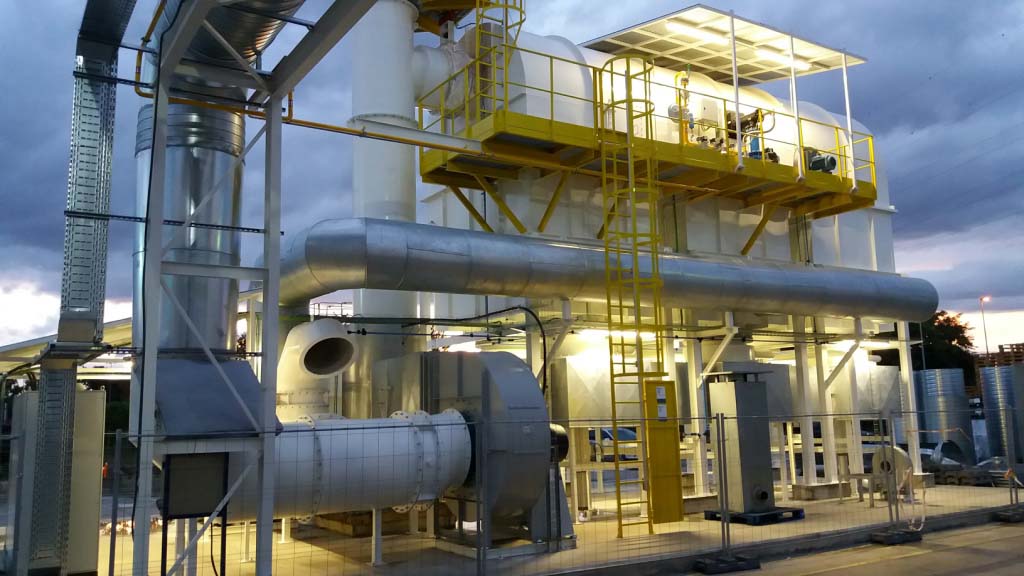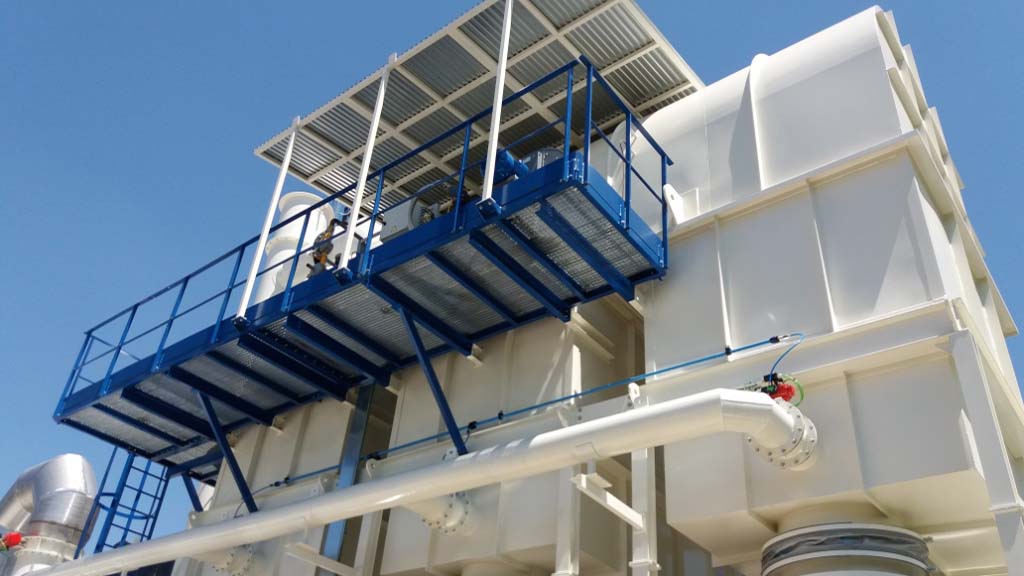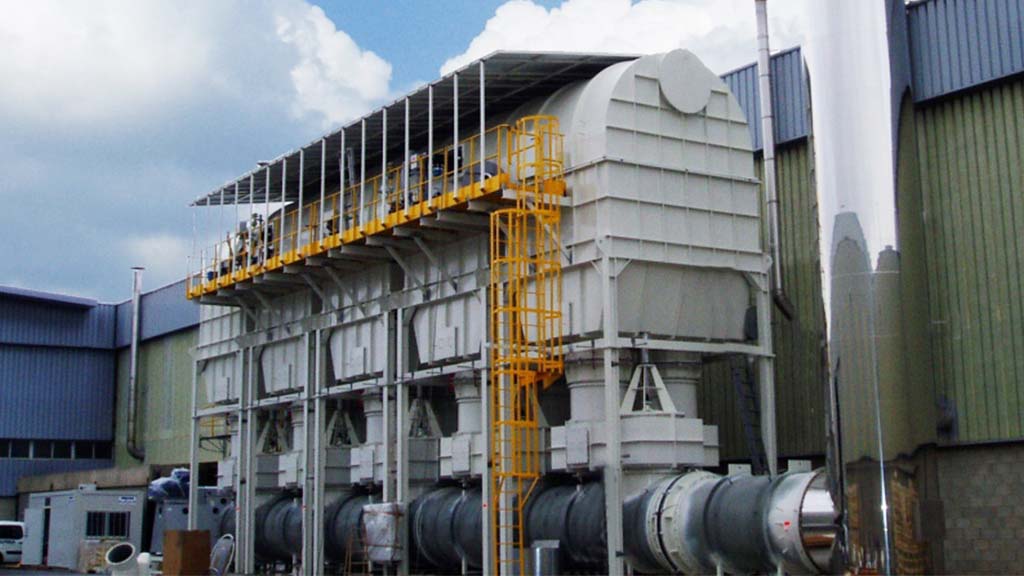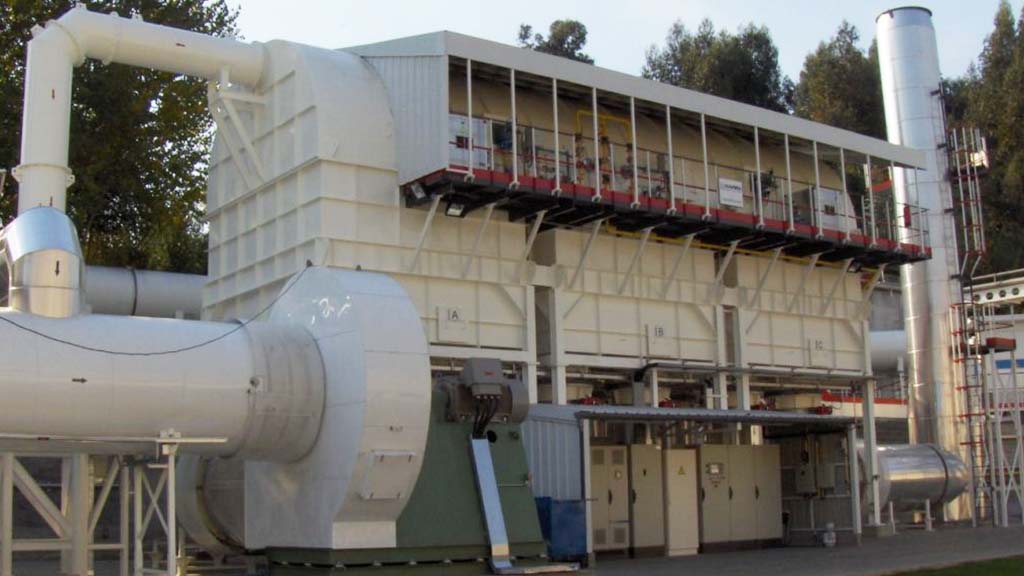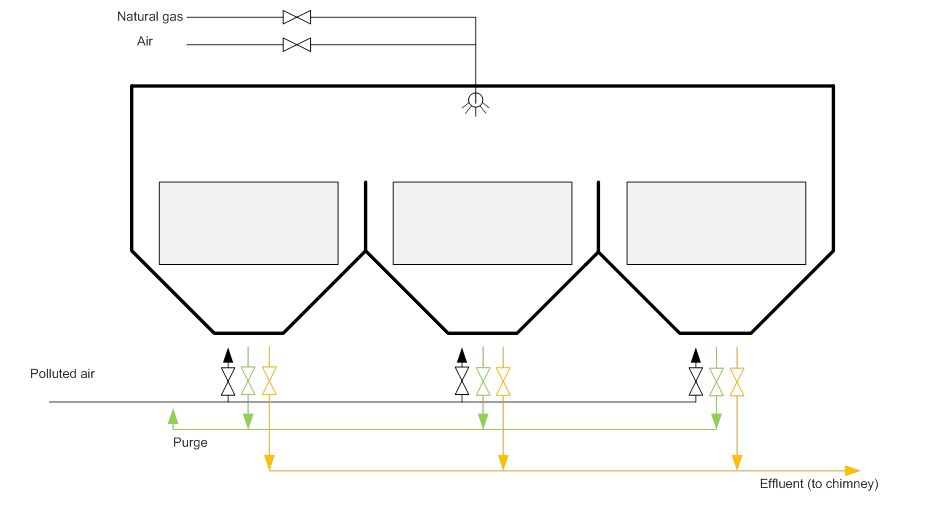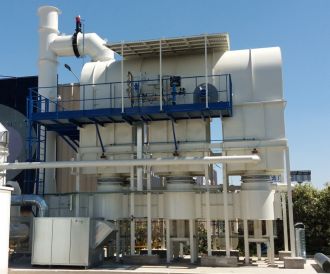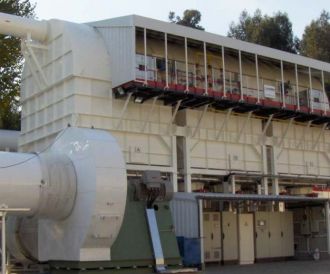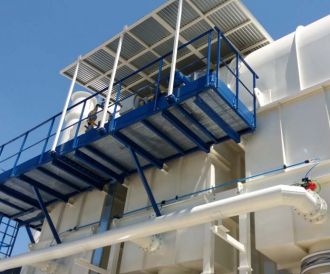Regenerative thermal oxidation
Thermal oxidation involves the afterburning of an airflow loaded with solvents, e.g. volatile organic compounds (VOCs). Compared to a classical thermal oxidizer, a large part of the heat is recovered through the use of ceramic beds in a regenerative thermal oxidizer. These beds consist of two or, in most applications, three pieces, but more can be added. The ceramic beds are responsible for energy recovery of the airflow by means of heating and cooling this flow.
Working process
The incoming airflow, which is loaded with pollutants, is first heated to the combustion point. This is largely done by one of the ceramic beds. The energy recovery by means of the ceramic beds is not in itself sufficient to keep the combustion going. For this reason, a continuous energy supply is needed. An additional combustion of e.g. natural gas then provides extra heat. In addition, the air stream is also loaded with solvents and will therefore contain a certain energy content (see autothermic point).
After combustion of the solvents, another ceramic bed will absorb the residual heat from the airflow and most of the cooled air will be removed. The third bed is cleaned with the rest of the hot air. This contaminated air is burned in the subsequent cycle together with the next loaded air stream. Each cycle the process restarts, but the functions of the beds are passed on. The bed that was responsible for cooling during the previous cycle now heats the airflow. The cleaned bed absorbs and cools the airflow and the third bed is cleaned. By using these ceramic beds, a lot of heat is recovered and the operating costs are greatly reduced.
Autothermic point
Besides energy recovery of the ceramic beds, the charged airflow will also include a certain energy content itself. When the solvents are burned, this energy is released. Depending on the amount of solvent in the airflow, there is enough energy present so that the system can sustain itself. The autothermic point is in most installations 1,5 to 2 g VOC/m³ and is an important parameter for the design.
Zeolite Rotor Concentrators
At high flow rates and low VOC concentrations, it can be economically and technically interesting to first install a Zeolite wheel before the RTO installation. The Zeolite wheel will provide an up-concentration and a lower flow rate, allowing the subsequent RTO installation to be dimensioned based on a lower flow rate and a concentration of solvents closer to the autothermic point. As a result, the installation is more compact and both operational and investment costs are optimised.
Advantages
- Highest removal efficiency
- High energy recovery (± 95%)
- No problems of corrosion of the heat exchanger or poisoning of a catalyst
- Low operational costs (autothermic point at 1,5 to 2 g VOC /m³)
- Also works at discontinuous flows/concentrations
- Reliable
- Eco-friendly
Regenerative thermal oxidation can be applied in the following sectors:
- Printing
- Chemical industry
- Pharmaceutical industry
- Production of paints, inks, varnishes and adhesives
- Surface treatments
- Drying processes
- …

